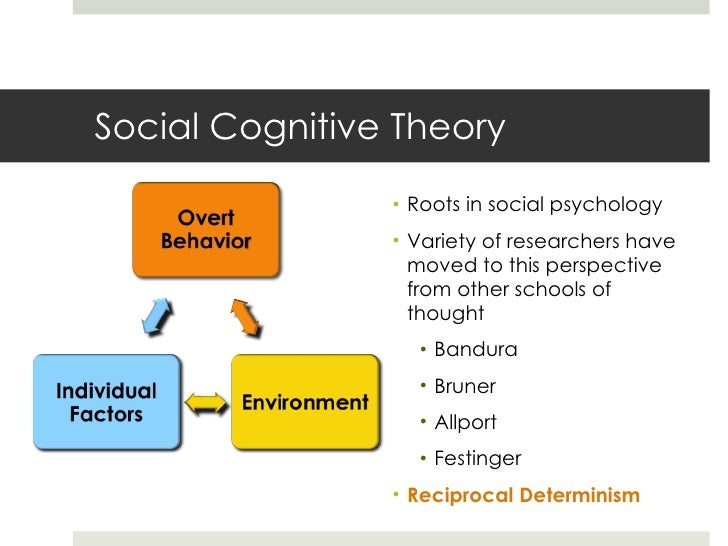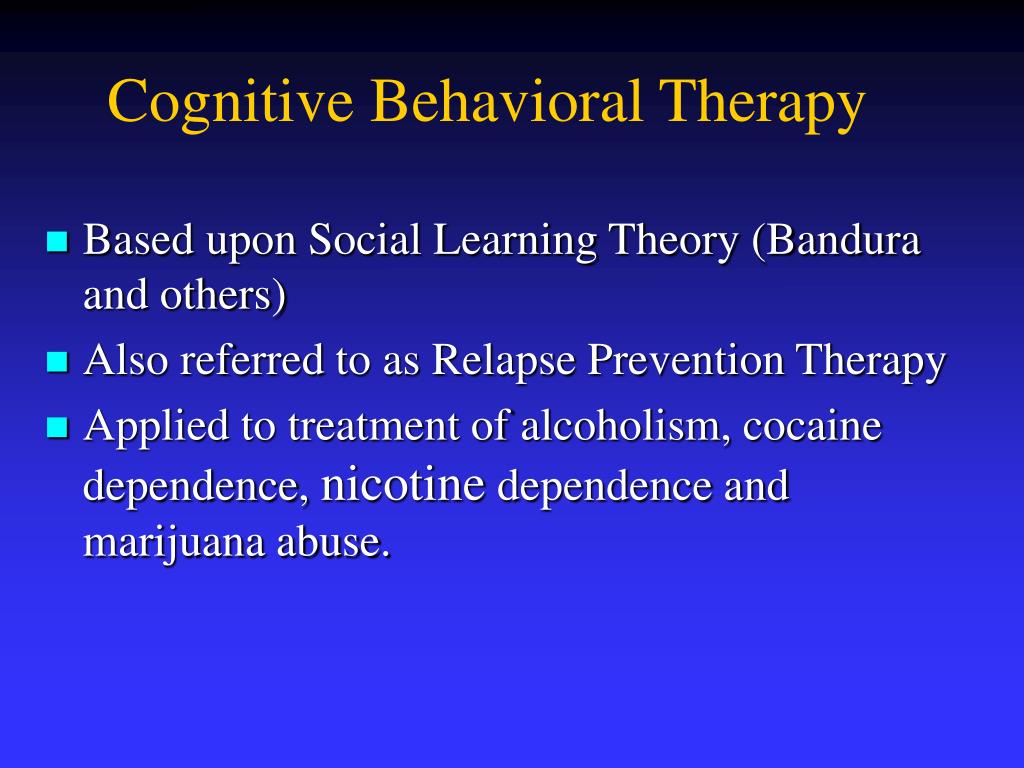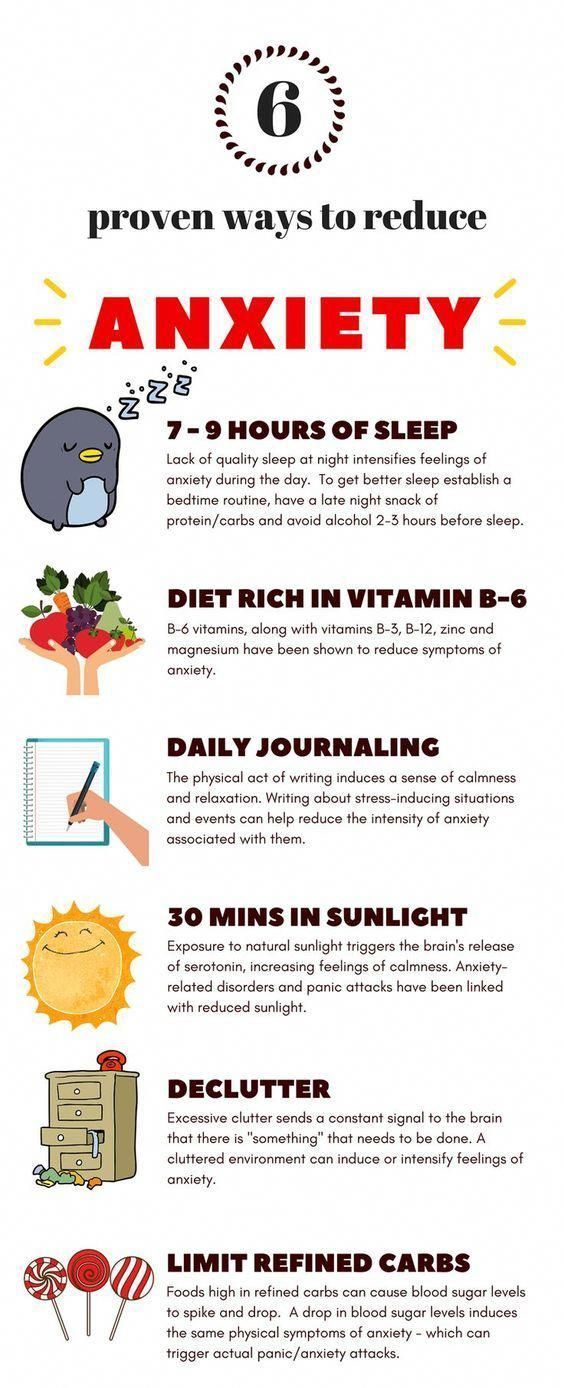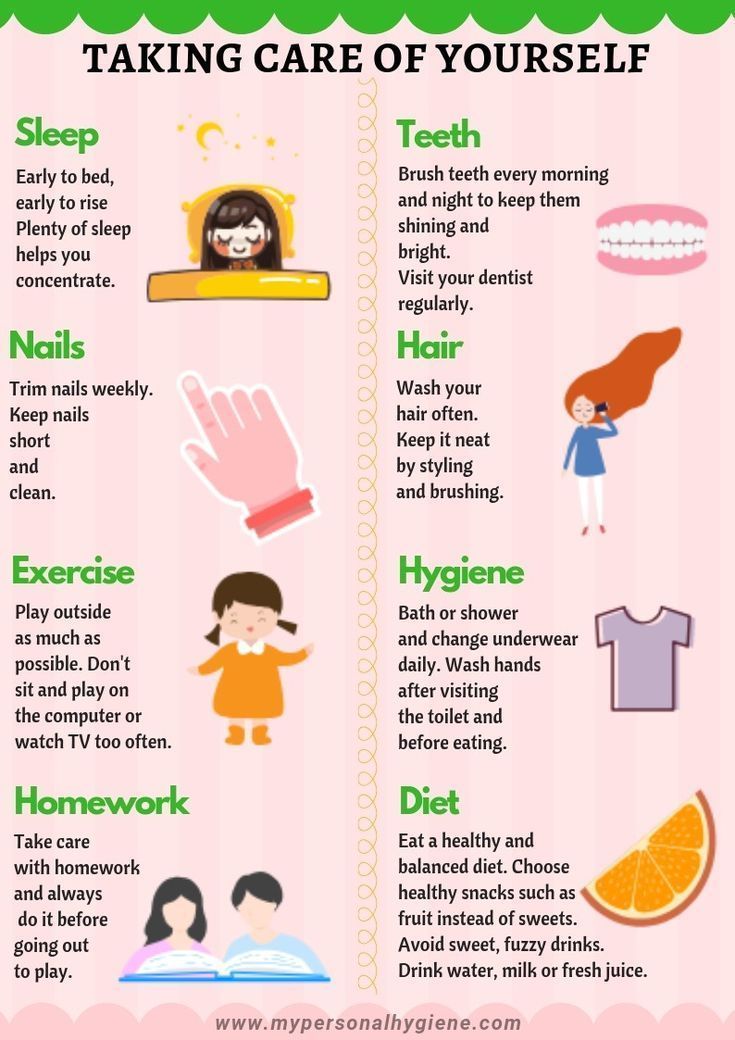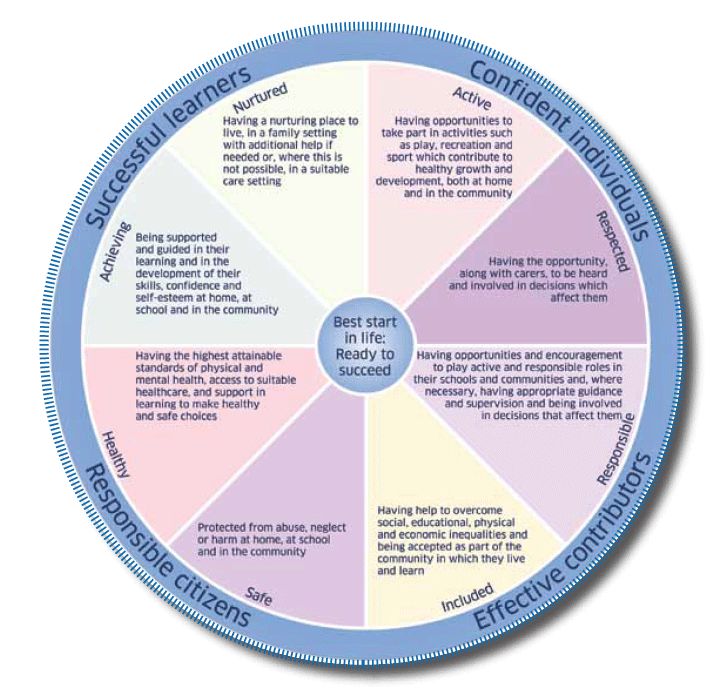Calm your senses
The Best 5-Senses Grounding Techniques for Anxiety Relief
Everyone feels anxious at one time or another. But did you know that engaging your five senses may help calm your worries?
Not everyone experiences anxiety in the same way, and what may offer anxiety relief to you may not work for someone else.
While many people take medications or attend therapy to manage anxiety symptoms, exercises that engage your five senses may also be helpful. This is particularly so when you need something that works right here, right now.
Indeed, intentionally focusing on hearing, touch, smell, taste, and sight might offer quick relief.
For someone with anxiety, knowing how to effectively use all five senses can be a powerful tool.
Grounding techniques are strategies that help connect or “ground” you in the present moment. They’re essentially a form of mindfulness, which has been shown to help many different mental health conditions.
A large 2014 research review with nearly 19,000 studies concluded that mindfulness-based stress reduction programs can ease symptoms of anxiety, depression, and pain.
Experts believe that grounding techniques, specifically, help you detach from emotional pain, so you can better regulate your emotions.
Grounding encourages you to take a break from your negative thoughts that may be causing anxiety until you’ve calmed down.
Grounding methods for anxiety are different from other relaxation exercises in that they focus heavily on distractions and quieting extreme emotions.
A small 2015 study found that just 1 hour of grounding exercises helps improve mood in people with anxiety and depression more than relaxation alone.
An added benefit of grounding techniques is that they can be done at any time, without anyone else knowing that you’re using them.
One popular grounding technique is the 5-4-3-2-1 method. Here’s how to practice your five senses grounding.
First, you may want to start with a simple deep breathing exercise called the 5-5-5 method. To do this, you breathe in for 5 seconds, hold your breath for 5 seconds, and then breathe out for 5 seconds.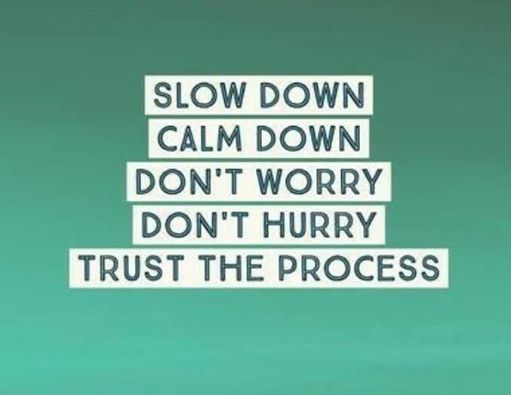
You can continue this process until your thoughts slow down or you notice some relief.
When you can find your breath, try practicing the 5-4-3-2-1 technique. For that, you want to look around and focus on:
- 5 things you see
- 4 things you feel
- 3 things you hear
- 2 things you smell
- 1 thing you taste
The idea is that the 5-4-3-2-1 technique helps you shift your focus to what’s currently happening around you instead of what’s making you feel anxious.
Focusing on each of your senses is a simple way to distract yourself from those thoughts that may be causing your anxiety.
Consider choosing a couple of exercises for each sense and trying to focus all your attention on the sensations.
Sight
To engage your sense of sight, here are some ideas:
- Look at every little detail on a family photo on the wall.
- Focus on a small object, such as a pencil or coffee mug, and identify every color and shape.
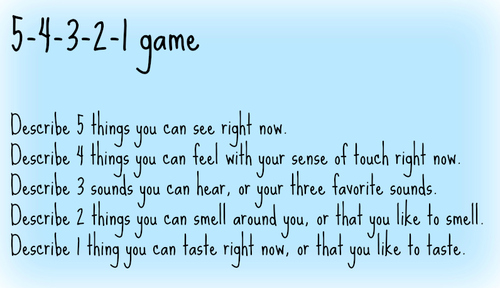
- Look at the sky for clouds, birds, sunrises, or anything else you can spot around.
- Focus your attention on a plant or flower and how it moves with the wind.
- Observe a pet while they play or rest.
You can pick large or small items to focus on. Once you choose an object, try to notice the color, texture, and patterns.
Touch
Activating your sense of touch can help distract you from anxious thoughts and may help you decrease the physical signs of anxiety.
You might want to try these exercises:
- Put your hands under running water, alternating between warm and cold temperatures every 30 seconds.
- Focus on how your clothing feels on your body or how your hair feels on your head.
- Touch different body parts by pressing down and holding for 30 seconds before moving to a different area.
- Touch the furniture in your living area and focus on its texture. For example, take notice of a smooth table.
Hearing
Focusing on external sounds can help ground you in the moment.
Here are some noises to notice:
- a barking dog
- a stomach rumbling
- a clock ticking
- traffic outside
- a car or subway engine
- music
- conversation
- birds singing
- the wind blowing
Smell
To incorporate smell into your grounding techniques, you may want to try these tips:
- Walk into your bathroom and sniff a bar of soap or shampoo.
- Light a scented candle.
- Diffuse a scented oil.
- Take in simple smells around you, such as the scent of a pillow on the couch or a pencil.
- Walk outside and breathe deeply through your nose. Maybe you will smell fresh cut grass or flowers blooming.
Taste
Try to pick something that you can easily taste, such as:
- a piece of gum
- a mint
- coffee
- sugar and salt
- a piece of food
You don’t actually have to taste these items if you don’t have them on hand. Instead, try thinking about the distinct flavors as you remember them.
Here are some additional tips to consider that can help when trying to engage your 5 senses to calm down:
- Begin grounding yourself in your senses as soon you realize you’re experiencing strong emotions or a difficult mood.
- Don’t make good or bad judgements. For instance, if you’re focusing on a brown wall but don’t like the color brown, simply tell yourself: “The wall is brown,” instead of, “I don’t like brown.”
- Do your best to focus on the present, not the past or future. If your thoughts wander, softly bring them back to your senses.
- Notice your mood before and after using a technique to see if it’s working for you. You might want to use a scale of 0 to 10 to rate your symptoms. Noticing relief may calm you down even more.
- Be flexible. If you notice one method is more successful than another, stick with that without judgement.
- Don’t give up. It might take a few attempts before grounding methods are successful.
Engaging all your five senses may help reduce symptoms of stress and worry.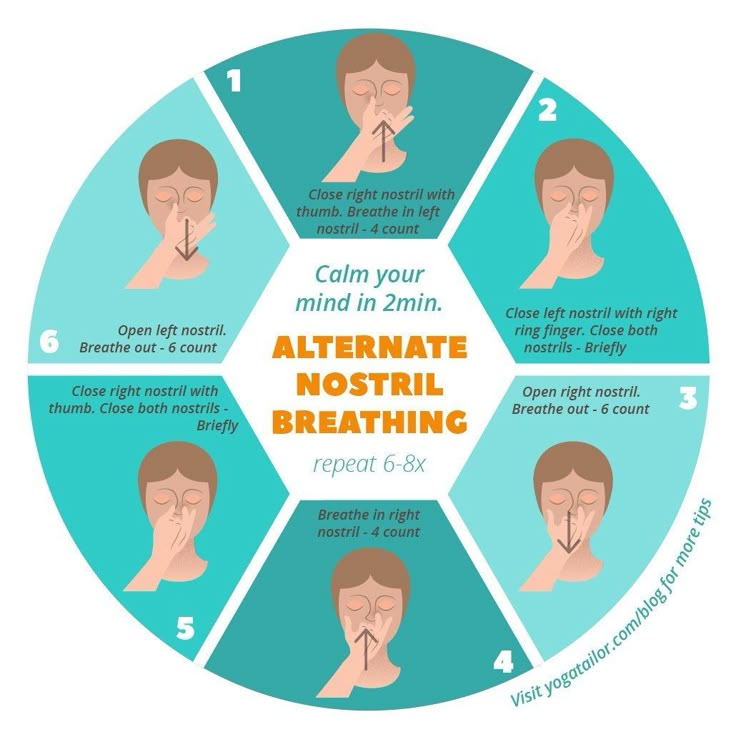
You can follow simple grounding exercises that activate your five senses — sight, touch, hearing, smell, and taste. For example, simply listening to birds chirping or smelling fresh cut grass could help you focus less on your anxious thoughts and more on the present moment.
If you’re having a difficult time managing your anxiety, you may want to consider reaching out to a mental health expert. They can provide you with additional tools to manage your symptoms and discover the root cause of the anxiety.
Use Your 5 Senses to Reduce Stress & Anxiety
The stress and anxiety many of us experience on a day-to-day basis can be exhausting. Fortunately, however, there are a ton of grounding techniques and calming exercises that help to bring us back to our center again. And one of those practices requires nothing other than your five senses, simply referred to as the 5-sense grounding exercise.
Psychotherapist Becky Howie knows just how effective this practice can be in resolving unwanted anxiety: “Oftentimes, when we feel anxious, we get caught up in our heads, listening to the worry tape that plays on repeat without even realizing it,” she says.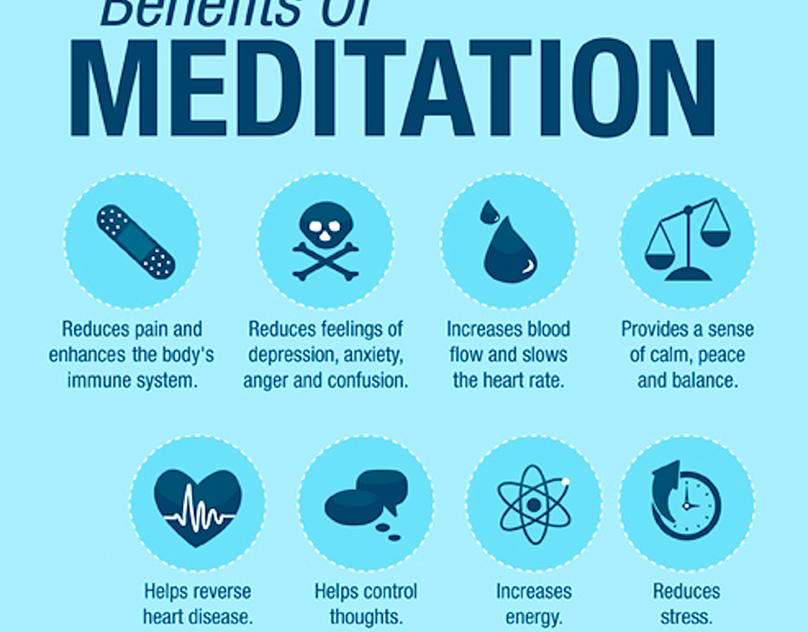 “ And one way to get off that worry train is to bring ourselves back to our bodies through our five senses, walking through each of them and noticing what information they are bringing to us. I find this exercise has an added calming effect if you do it outside in nature.”
“ And one way to get off that worry train is to bring ourselves back to our bodies through our five senses, walking through each of them and noticing what information they are bringing to us. I find this exercise has an added calming effect if you do it outside in nature.”
Now, let’s begin the countdown, starting with sight:
Sight: 5 Things You Can See“Look around and find five different things in your environment that you can see, and describe them in as much detail as you can as if you were trying to explain them to a blind person. Notice colors, shapes, light, shadow, etc.”
Looking out my window, I see a tree standing tall, with tiny leaves that grow in size as they near the ends of the branches. The tree is planted in a small rectangle of mulch, which creates a break in the concrete sidewalk. I also see my car — a blue trailblazer — sitting about 20 feet from this tree. If I redirect my attention to the inside of my office, I see a stack of books sitting on my desk, which vary in size; a vase of ceramic, pink flowers, atop the ledge of the staircase; and finally, my thermos of coffee, designed to look like a clean cut of wood.
“Same as above, but close your eyes. Try to identify four different sounds you can hear and describe them in detail. You may have to slow down a bit to notice subtle or quiet sounds.”
I can hear the click-clacking of my keyboard while I type, which quickens and slows sporadically (I enjoy this noise). I can also hear my coworker guiding his mouse across his desk, cars honking and zooming by outside, and a real mouse gnawing at the beams above me. This last noise I don’t like so much.
Touch: 3 Things You Can Touch“Find three ways to interact with your environment using your sense of physical touch. Can you run your fingers through the grass? Feel your butt in a chair or on the ground? Notice the cool air on your cheeks?”
I can feel my foot pressed comfortably against the wall in front of me. My toes fit perfectly between it and the leg of my desk. I also feel the smoothness of my keyboard and the grooves between each key.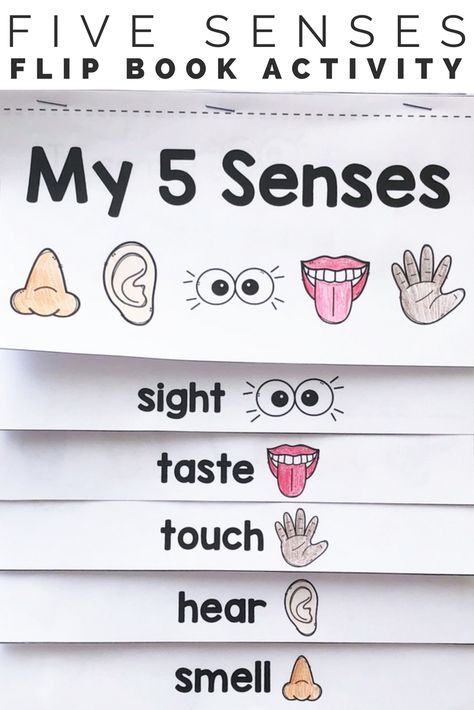 And lastly, I feel my back pressed against my leather desk chair (which is super cozy, might I add).
And lastly, I feel my back pressed against my leather desk chair (which is super cozy, might I add).
“Seek out two things you can smell. Perhaps it’s freshly mowed grass or the smell of your detergent on your clothes.”
I can smell the sweet but strong aroma of my coffee, as I raise my thermos to my mouth; this smell is comforting. I can also smell the sweat and the sunshine left on my sweater from the last time that I wore it. I remember thinking I could get one more wear out of this sweater before I needed to throw it in the wash. The smell is nice, and I stand by my decision.
Taste: 1 Thing You Can Taste“Is there something in your environment you can safely taste? A drink or food nearby? If not, simply notice the taste inside your mouth.”
My mouth is full of sweetness, as I’m in the middle of eating my breakfast: chocolatey granola, ripe strawberries, and vanilla Greek yogurt. I love the bursts of chocolate that awaken my taste buds and the subtler taste of the yogurt that counters it. The simple sweetness puts me in a good mood and sets me up for a great day.
The simple sweetness puts me in a good mood and sets me up for a great day.
How’d you do? Were you able to count down, using your five senses in this mindful exercise? I hope so, and I hope that it helped to reduce your anxiety. Now, if you’re up for it, you can perform one more exercise, similar to the one above. Howie calls it finding your happy place.
“I invite you to go someplace safe in your mind. This could be a real place or an imaginary one, or a combination of both. The only requirement is that it is a place you feel like you can safely relax, let go, and be yourself. Call that place up in your mind in as much detail as you possibly can. And then, walk through the five senses exercise above in your mind’s eye in this happy place you have created.” This exercise can help ease your worries when you feel anxiety coming on, or serve as a reminder to your mind that it’s okay to relax, she explains.
Calm me, storm. Formation of psychological defenses in conditions of trauma | Blog
Inna Kirilyuk, Twitter Facebook
Graduation work in the training program "Fundamentals of Analytical Counseling and Jungian Therapy". Today we will get acquainted with the work of Alena Skala on the topic: “Calm me, storm. Formation of psychological defenses in conditions of trauma.
Today we will get acquainted with the work of Alena Skala on the topic: “Calm me, storm. Formation of psychological defenses in conditions of trauma.
And he, rebellious, asks for a storm, as if there is peace in the storm
M. Lermontov "Sail"
The epigraph to this research work contains a line from the poem "Sail" by Lermontov. This quote very accurately reflects the experience of the soul, which I would like to share in this article. It will be not only about the rebellious feelings that the poet described, the internal conflict of the midlife crisis, but also about the deep difficult feelings and experiences of the child, which he had to face while still in the womb, from the moment of birth and only having learned to walk. The common thing is the image of a storm and a storm - a symbol of strong uncontrollable feelings and disturbing experiences that sometimes overwhelm us. Unfortunately, it happens that it is with such feelings and experiences that the child's soul encounters if the mother is overwhelmed with them during pregnancy and / or at the birth of a child. Mother's unconscious fears and feelings, especially those not lived through, processed or repressed, become the contents of the unconscious child. The inability to live and endure the overwhelming amount of impressions, which greatly exceeds the ability to consciously experience, can also lead to trauma.
Mother's unconscious fears and feelings, especially those not lived through, processed or repressed, become the contents of the unconscious child. The inability to live and endure the overwhelming amount of impressions, which greatly exceeds the ability to consciously experience, can also lead to trauma.
“A mother who cannot cope with her own mental states. Will return projections to the child. Gianna Williams (G. Williams, 1997) describes it as a "bulging container": one that pours projections into the child rather than taking them away. According to W. Bion's theory of containment, the main function of the mother is to accept and modify the projections of the baby. Sometimes she fails to cope, and then the child introjects her own anxieties in a raw form. In the worst case, the mother may project her own experiences onto the child.” (Inna Kirilyuk, article "Anorexia. Body, mind, ritual").
The topic of my research is how psychological defenses are formed, how these defenses protect us, how they help us cope in the future when traumatic or crisis situations arise.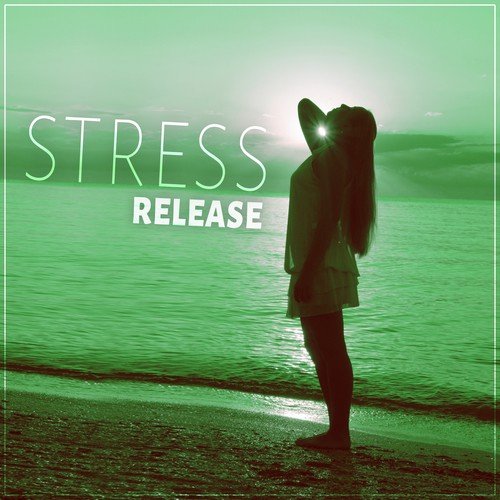 And also about the role of nature and archetypal symbols, which can act as helpers and be a resource in cases where human support and strength are not enough or are not nearby for various reasons. Although I did not set a goal to reveal in this work the topic of the influence of the parental model of relationships on the child, it will also be present here.
And also about the role of nature and archetypal symbols, which can act as helpers and be a resource in cases where human support and strength are not enough or are not nearby for various reasons. Although I did not set a goal to reveal in this work the topic of the influence of the parental model of relationships on the child, it will also be present here.
In this work, I rely on living personal life experience. To understand the topic, I describe autobiographical moments in the past and present, as well as a therapeutic process that helped open up and cope with external and internal events in the present.
Thinking about the beginning of my life and the events taking place in the personal life of my parents, and especially in the inner world of my mother, who could experience the events of betrayal as an "internal storm", "a storm of emotions", I can imagine how terrible and impossible it was for her to be alone deal with it, and that to some extent she was projecting this storm onto me. I am her child, unconsciously absorbed this storm of family life. He, the storm, could be fixed in the image, which will be discussed later. Which I unconsciously carried for many years.
I am her child, unconsciously absorbed this storm of family life. He, the storm, could be fixed in the image, which will be discussed later. Which I unconsciously carried for many years.
In his book Trauma and the Soul, Donald Kalsched writes: “In psychoanalysis, people live their history over and over again in order to integrate the disparate parts of their past and , and during all this time they are looking for a new unifying pattern, a new center that can change their vision of themselves. They are waiting for such a message - such a recovery of memories that will take them beyond personal memory to deeper foundations, and through this find the meaning of their lives when everything else has already lost it. (D. Kalsched "Trauma and Soul", p. 38). Such messages can come through dreams or, as in my case, through a strong inner call that draws me to a place and time in which, at a very early age, under certain circumstances, a psychological defense was formed.
For clarity of the described case, I would like to ask questions, and at the end of the story find answers:
What caused the formation of psychological defense? What was the essence of this protection? Under what circumstances did it form? How did it affect life? How did you unpack and what did it lead to?
The work structure consists of two parallel branches. One reflects the real, mature age, I called it "The Way of the Heroine", after the title of the book, which I will also rely on in my work. And the second is the past, childhood, I called it "Calm me, storm." In this line of narration, I rely on Kalsched's work Trauma and the Soul. I suggest that you, while reading this work, keep both of these branches in your attention, weaving them in your imagination. Or maybe unweaving...
One reflects the real, mature age, I called it "The Way of the Heroine", after the title of the book, which I will also rely on in my work. And the second is the past, childhood, I called it "Calm me, storm." In this line of narration, I rely on Kalsched's work Trauma and the Soul. I suggest that you, while reading this work, keep both of these branches in your attention, weaving them in your imagination. Or maybe unweaving...
The path of the heroine
Questions knock on our consciousness from the unconscious with a sense of uncertainty, loss of one's path, discomfort, dissatisfaction with life and conflicts torn from within. Often this happens with complete external well-being - a happy long-term marriage, the joy of motherhood and successful social realization. My questions began to knock at the age of 35. Since that time, I have been in a state of personality crisis, which affected my relationship with my husband, the impossibility of being in a relationship. Constant dissatisfaction, dissatisfaction on both sides, scandals and quarrels were exhausting, and heavy guilt settled inside, as our two children, 5 and 3 years old, became witnesses of this. In my marriage, there was no violence, infidelity, alcohol or drug addiction, these quarrels appeared as if from nowhere, which caused misunderstanding, disorientation and frightening. The inability to get out of the vicious circle gave rise to a feeling of powerlessness. Before the onset of the acute crisis, we lived in a prosperous and happy marriage for 15 years. But at some point, being in this relationship became unbearable and impossible, and I decided to leave my husband.
In my marriage, there was no violence, infidelity, alcohol or drug addiction, these quarrels appeared as if from nowhere, which caused misunderstanding, disorientation and frightening. The inability to get out of the vicious circle gave rise to a feeling of powerlessness. Before the onset of the acute crisis, we lived in a prosperous and happy marriage for 15 years. But at some point, being in this relationship became unbearable and impossible, and I decided to leave my husband.
In her book The Heroine's Journey, Maureen Murdoch writes about the beginning of the Heroine's search for her identity and how the "call" comes when the "old self" no longer matches you. “The journey can begin when a girl leaves her father's house, goes to college, gets a job, goes on a trip, or when a middle-aged woman gets a divorce. The beginning of the path to oneself can be marked by depression and a period of stagnation.
I moved with my two children to my hometown to my parents' house. It was late autumn. I was in a deep depression, painful experiences from the breakdown of relationships, complete disorientation and misunderstanding of what was happening to me and why everything happened in my life like this. Closer to winter, I was more and more drawn to the sea. I often imagined myself on the seashore in winter. So that everything is gloomy, gray, damp and cold, and the smell of salty air. And it is imperative that there be a storm on the sea. When this picture appeared in my imagination, I felt calm and warm inside. As if this is my refuge, my place where I can hide from my dark, raging, elemental terrifying state inside. Or maybe give this state to the real elements ...
I was in a deep depression, painful experiences from the breakdown of relationships, complete disorientation and misunderstanding of what was happening to me and why everything happened in my life like this. Closer to winter, I was more and more drawn to the sea. I often imagined myself on the seashore in winter. So that everything is gloomy, gray, damp and cold, and the smell of salty air. And it is imperative that there be a storm on the sea. When this picture appeared in my imagination, I felt calm and warm inside. As if this is my refuge, my place where I can hide from my dark, raging, elemental terrifying state inside. Or maybe give this state to the real elements ...
Kalsched in his book "Trauma and the Soul" writes about the experience of mystical experiences of "highly sensitive people": "Many of them formed deep emotional ties with nature, animals, the mythopoetic world of cinema, theater, art and literature, especially with poetry. Sometimes they talk about "saving" themselves" in their inner world, full of supernatural presence, in a world that has become an archetypal container and provided a refuge for the innocent part of their soul that escaped from the outside world. Often they talk about the experience of "synchronicity", which defies rational explanation" (D. Kalsched "Trauma and Soul" p. 15)
Often they talk about the experience of "synchronicity", which defies rational explanation" (D. Kalsched "Trauma and Soul" p. 15)
There was no rational explanation for my irresistible desire to be at sea during a storm. By December, the desire to be at the sea intensified, and I began to think about a trip to Odessa to walk along the seashore, to be there. That winter, I did not manage to go to the sea.
A year later, I already felt better. The following fall, she went into therapy, still painfully experiencing a breakup. Life slowly got better. I dealt with my feelings and experiences, and perceived myself as a person incapable of being in a relationship. I did not want to be in a relationship and thought about how good it was for me to be alone, that I was not made for marriage. I was repelled by any attachment to me. The love of freedom and independence familiar to me from childhood were fully manifested. I liked to feel free, not to be attached to anyone, I didn’t want to create hearths or a traditional family with the obligatory presence of a husband. I took care of myself, plunged into professional development, or rather, I decided to radically change my profession and developed in this vein. With a psychoanalyst, I explored this position and states, slowly opening the veil of the past and child-parent relationships.
I took care of myself, plunged into professional development, or rather, I decided to radically change my profession and developed in this vein. With a psychoanalyst, I explored this position and states, slowly opening the veil of the past and child-parent relationships.
In The Heroine's Journey, Maureen Murdock describes how, during a program at the Institute of the Family, she studied and applied a technique called "family sculpting" on herself. This technique is based on reproducing frequently repeated scenes in the family life of a certain person. After that, the image of the Way of the Heroine came to her. She describes her insight as follows:
“After that, I was immobilized for three days. I lay on the floor of the living room and cried about the pain and chaos living in my family, the pain and chaos that, through hard work, I learned to block. And through these tears, the image of the Heroine's Path appeared to me, a roundabout Path in a clockwise direction.
He began with a sharp rejection of his femininity, defined by me as dependence, subordination, full of anger. This was accompanied by a total immersion in a kind of heroic journey in the company of male allies, with the goal of gaining independence, prestige, money, power and success.
The stage described by Maureen Murdoch accurately conveys the state at the beginning of my Path.
To set off on a journey, you need a destination. But it happens when the call calls on the way. And then you set off on the road, not seeing the goal, not understanding why you should go. You just have to trust yourself.
Odessa
In December, the desire to be at sea begins to haunt me again. And to gloomy, gray, damp, and a strong storm. Since childhood, I have loved heavy rains, thunderstorms and lightning. At these moments, it becomes quiet inside, some sense of reverence and unity, security and tranquility.
Two more elements appeared in my fantasies: rain and a car. I wanted to be inside the car with someone close to me. And so that we would sit inside the car, on the seashore, and at that time there would be a strong storm on the sea, it would rain on the car from above, and so that drops would flow down the windows of the car. I just wanted to sit quietly inside, be silent and look at the streams of rain on the glass. This picture haunted me. I felt that I really needed to go to the sea in winter, in December. It felt like a strong call from within, which I could not explain to myself.
I just wanted to sit quietly inside, be silent and look at the streams of rain on the glass. This picture haunted me. I felt that I really needed to go to the sea in winter, in December. It felt like a strong call from within, which I could not explain to myself.
Just before the New Year, on December 31, I arrived in Odessa. I went for a walk along the embankment alone until late in the evening, and by night I returned to the hotel, satisfied and peaceful, to celebrate the New Year. I couldn't get through to my dad.
From early childhood, I had a close relationship with my father. I always felt my father's love, his special careful attitude towards me, he distinguished me, always listened to me and believed in me. Dad instilled in me a sense of love for nature and art. I was my father's daughter, his princess. Since childhood, I heard that my father's character is the same freedom-loving, wayward and stubborn.
In the chapter titled "Identification with Masculinity. Daddy's Girls" of the same book "The Heroine's Journey" Maureen Murdoch writes: "Women who have been accepted by their fathers are sure that they will be accepted by the rest of the world. In addition, they develop a positive attitude towards their male nature. They have an inner male figure that loves them as much as they love themselves. This positive inner male or animus will support their creative efforts in an accepting, non-judgemental way. This inner figure is generated by a positive relationship with the woman's father or with the father figure. The inner man will be a supportive guide throughout the Heroine's journey." (Maureen Murdoch, The Heroine's Journey, p. 47)
Daddy's Girls" of the same book "The Heroine's Journey" Maureen Murdoch writes: "Women who have been accepted by their fathers are sure that they will be accepted by the rest of the world. In addition, they develop a positive attitude towards their male nature. They have an inner male figure that loves them as much as they love themselves. This positive inner male or animus will support their creative efforts in an accepting, non-judgemental way. This inner figure is generated by a positive relationship with the woman's father or with the father figure. The inner man will be a supportive guide throughout the Heroine's journey." (Maureen Murdoch, The Heroine's Journey, p. 47)
For the past few years, my parents have lived in different countries. Of the whole family, dad kept in touch only with me. We often called on Skype. That morning, I really wanted to tell my dad that I was in Odessa.
Port
Of all the sights in Odessa, I have always been attracted by the sea station and the port. I like to walk there for a long time, stand, look at the ships, listen to the sounds coming from the port. This place always attracted me when I was in Odessa, and I could not find an explanation for this. The next morning, I walked aimlessly around the city. I intuitively went to the seaport, and at the moment when I was walking along the port fence, my dad called me. I joyfully began to tell him that I was in Odessa, I decided to celebrate the New Year here, yes, I myself, and right now I am walking past the Odessa port, dad, do you hear its sounds? And dad was surprised and said that we were leaving Ukraine from this port. I was 1.5 years old. We moved to Russia, where dad was offered to serve, he was a military man. The whole family moved, dad, mom, my older brother and I, with all our things and a car. They sailed from the port of Odessa. And that was at the end of December. We sailed on the sea for several days, and all the time of the journey at sea there was a storm and rain.
I like to walk there for a long time, stand, look at the ships, listen to the sounds coming from the port. This place always attracted me when I was in Odessa, and I could not find an explanation for this. The next morning, I walked aimlessly around the city. I intuitively went to the seaport, and at the moment when I was walking along the port fence, my dad called me. I joyfully began to tell him that I was in Odessa, I decided to celebrate the New Year here, yes, I myself, and right now I am walking past the Odessa port, dad, do you hear its sounds? And dad was surprised and said that we were leaving Ukraine from this port. I was 1.5 years old. We moved to Russia, where dad was offered to serve, he was a military man. The whole family moved, dad, mom, my older brother and I, with all our things and a car. They sailed from the port of Odessa. And that was at the end of December. We sailed on the sea for several days, and all the time of the journey at sea there was a storm and rain.
I knew that we were moving from Ukraine by ship, but I did not remember this, and did not know the details. But now I had to ask my mother about everything and find out all the details, because this place, the event and the feelings and memories associated with it burst into my life during a period of acute severe crisis.
But now I had to ask my mother about everything and find out all the details, because this place, the event and the feelings and memories associated with it burst into my life during a period of acute severe crisis.
And mother told...
By ship
The reason for our family to move from Ukraine was the choice that confronted my dad: save the family by moving to another place of service, or go to another woman. Mom found out about daddy's betrayals when she was pregnant with me. Until the moment of moving, mother was in a state of stress, vulnerability and helplessness, strong unbearable feelings of pain and betrayal, with dignity maintaining calm and endurance, as she had to cope and think about two children.
After the story was told, I thought with the therapist about what feelings and emotions a woman experiences with two small children, whose husband leaves for another woman? The world is collapsing, all the pillars are collapsing, it's so scary to be alone, without support. This is a whole gamut of feelings, consisting of feelings of betrayal, resentment and disappointment, powerlessness and emptiness. This is a storm that floods, and a storm that instills fear and threat to life. These feelings are scary to meet, it hurts to touch them. Despite this, my mother managed to persevere in that situation thanks to her psychological defenses. Partly crowding out, partly suppressing the unbearable at that time range of feelings and emotions associated with daddy's betrayals. And also with the stress associated with moving to another country, away from home, without the help and support of loved ones.
And how hard it was for me to be in this. Despite the real facts and difficult relationships between my parents, a strong parental couple and a feeling of a complete family formed inside me. What contributed to this? At this age, the child still does not know anything about life and does not understand anything about relationships. But we are all born with a need for parental love and a need for the security that a family gives us. Intuitively, the child feels the importance and value of the family as a reliable support for further development. When a family collapses, the whole world of a child collapses, and the self will do everything possible to save this world, it will come to the rescue and create this world deep inside. The unconscious will help protect the psyche from the destruction and horror of what is happening until the consciousness can cope with these feelings, and the personality gets stronger and can face the experiences and live them.
Intuitively, the child feels the importance and value of the family as a reliable support for further development. When a family collapses, the whole world of a child collapses, and the self will do everything possible to save this world, it will come to the rescue and create this world deep inside. The unconscious will help protect the psyche from the destruction and horror of what is happening until the consciousness can cope with these feelings, and the personality gets stronger and can face the experiences and live them.
Often, a moment or a short moment of the strongest experience and connection with something more than personal is enough to form a defensive reaction. With an experience emanating from deep layers of the unconscious. Examples of such encounters are described by Kalsched in his book Trauma and the Soul.
How did this happen in my story? Mom told the details of that trip. For four days we sailed on the sea, and all the days it rained and there was a storm. There was a strong pitching on the ship, my parents and my five-year-old brother were sick, but I was in complete calm and curiosity from what was happening. According to my mother, it was impossible to stay in the cabin during the day. The only place where I didn’t feel sick or sick was our car, attached to the deck with cables. We spent our days in the car, escaping from the storm and heaving. Dad, mom, brother and me. Mom says it was safe and secure there, despite the fact that the waves hit the car. From inside, we watched streams of rain run down the windows. My consciousness does not remember this, but my body and soul remember.
There was a strong pitching on the ship, my parents and my five-year-old brother were sick, but I was in complete calm and curiosity from what was happening. According to my mother, it was impossible to stay in the cabin during the day. The only place where I didn’t feel sick or sick was our car, attached to the deck with cables. We spent our days in the car, escaping from the storm and heaving. Dad, mom, brother and me. Mom says it was safe and secure there, despite the fact that the waves hit the car. From inside, we watched streams of rain run down the windows. My consciousness does not remember this, but my body and soul remember.
Comparing this knowledge with my feelings and sensations, I reflect on what happened then that brought me to this point 40 years later? I think that the raging elements, the literal storm on the sea, reflected my inner experiences. It can be said that I projected and transferred my overwhelming feelings onto a literal external reality - a storm on the sea, a powerful archetypal force. At the same time, a calm formed in the inner world, the opposite of a storm feeling - calmness and peace, as well as a sense of security that a child experiences, feeling the unity of his family and unity with his family. I think that I fixed this state inside, and it became my internal resource, donated by the archetypal nature of the unconscious.
At the same time, a calm formed in the inner world, the opposite of a storm feeling - calmness and peace, as well as a sense of security that a child experiences, feeling the unity of his family and unity with his family. I think that I fixed this state inside, and it became my internal resource, donated by the archetypal nature of the unconscious.
From an article entitled “The structure of the psyche. Psychological trauma and compensation”: “The fixation that appeared as a result of psychological trauma becomes the guiding vector of the psyche, and then the whole personality system is built around this fixation.”
This feeling of closeness with the family, its completeness, formed at that moment, carried through life, was both a psychological protection and an internal resource that helped me grow and develop as a happy and free child, successfully cope with the hardships of adult life.
Kalsched in Trauma and the Soul writes: “…individuals with a history of childhood trauma often have access to altered states of consciousness in which they are, so to speak, attuned to 'frequencies' that most of us cannot see or hear. Sometimes they have life-saving encounters with the positive side of the numinous, when in a moment of dire need there is a "voice" or "presence" like a guardian angel. This gives a kind of internal security, which they have never received from any of the people ”(D. Kalshed“ Trauma and Soul ”p. 50)
Sometimes they have life-saving encounters with the positive side of the numinous, when in a moment of dire need there is a "voice" or "presence" like a guardian angel. This gives a kind of internal security, which they have never received from any of the people ”(D. Kalshed“ Trauma and Soul ”p. 50)
It can be said that the literal real element, a storm on the sea, became an angel who appeared, the object to which the child’s unconscious could transfer its feelings and experiences, seeing in nature an ally capable of freeing the child’s soul from the burden, protecting and saving it.
I think that this example shows how the human psyche recognizes and expresses in symbols the subjective reality through the archetypal image. The soul found a way and an opportunity to transfer mental content to an external object, making room inside for the opposite, saving, and not destructive, state - peace, security, silence. There was a meeting with the positive integrating aspect of the archetypal level.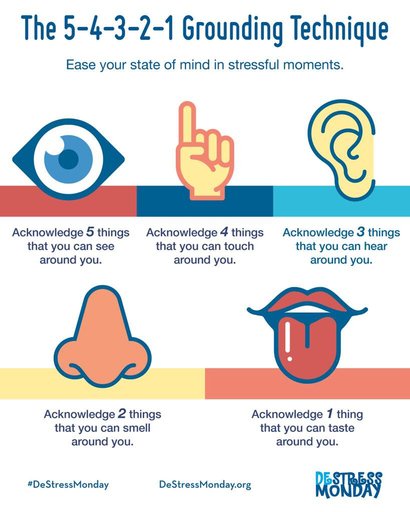
From the foregoing, it is possible to answer the questions posed at the beginning: the complex interpersonal relationships of the parents and the feelings and experiences of the mother repressed in connection with this became the reason for the formed defense. The essence of protection was to form an internal positive feeling of family unity and a sense of security, which has a supporting effect on development and subsequent life. It remains to answer the question: how did this psychological defense unpack and what did it lead to?
History shows how the inner call of the self literally calls to the place of a saving meeting. What for? And why now? The internal whole image created by me at a very early age served as a protection for me for many years. But it's time to consciously live those feelings. The onset of the crisis was provoked by a number of triggers, one of which was my entry into the age at which my mother was at the time of the events described above. And also the fact that I have two children at approximately the same age that I and my brother were at the time of the events described.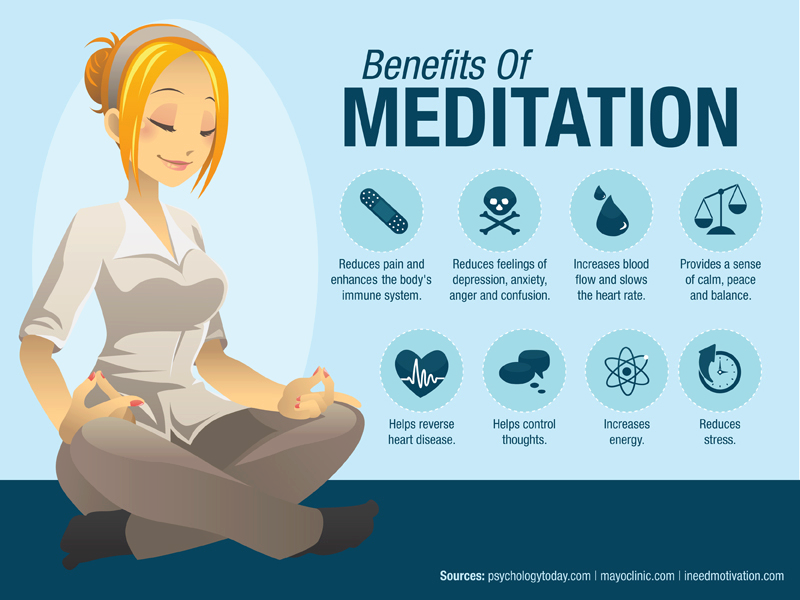
I think about the importance of going back to that little girl who had to face adult relationships too early and the hard feelings that go with them. To thank her for the fact that she managed to preserve and carry in herself the inner feeling of family and the unity of the couple, father and mother, man and woman, given then during the storm. Recognize the influence of the parental model of the family on your personal relationships. And from there, from this point, start a new personal history of relationships. My.
References:
- D. Kalshed, Trauma and Soul: A Spiritual-Psychological Approach to Human Development and Its Interruption. — Per. from English - M .: Kogito - Center, 2015. - 488.
- Kalshed D., "The Inner World of Trauma".
- Murdoch M. The Heroine's Journey. Moscow: Club Castalia. 2014. - 240 p.
- Inna Kirilyuk “Anorexia: body, psyche, ritual”// article, Jungian Analysis Journal, No. 4 (39), 2019.
- Website pro-psychology.
 net “The structure of the psyche. Part 3: psychological trauma and compensation”, article.
net “The structure of the psyche. Part 3: psychological trauma and compensation”, article.
Graduation papers of students
Related posts
Sleeping beauty or prickly rose - June 15,
Improving the state of mind with the help of active imagination and work with dreams - June 4,
Complex of the dead mother: Death and Renaissance of Libido - May 26, 9000
Frida - Journey of heroin . Images of traumatized femininity in the work of Frida Kahlo — May 6
Negative mother complex or scapegoat complex - 26 April
← →
The natural nature of fear. How to stop being afraid? Calm your fears.
The first emotional reaction to any change is fear.
Fear manifests itself in our lives in the form of passivity, aggression or excitement.
What does fear want from us?
Fables that fear tells us:
If we stop, fear robs us of a piece of our soul.
People who experience fear, but allow it to take over, consider negative consequences as one of the possible options for resolving the current situation. You can control fear. Recognizing the possibility that a problem that is significant to you may have several options for its solution.
Usually people are driven by 5 basic fears that prevent them from making their life the way they would like it to be.
How to cope with the fear of rejection? - Be prepared to be rejected.
Be prepared to accept rejection!
The fear of rejection is directed to the future. We contemplate the horrific consequences of being denied our request or not being accepted into our ranks. But why do we believe that positive self-esteem is only possible if everyone around agrees with our opinion? Our chances of success will be greatly increased if we are ready to receive a negative answer.
Yes, I am prepared for this company or this client to reject my offer.
It is useless to tell people not to take rejection personally, or to get rid of the fear of rejection, because this fear is produced by the cerebellum, which is responsible for the manifestation of fears in general. We have the mental and spiritual strength to cope with its negative effects. We can say: "Fear of rejection, you may live inside me, but you will never possess me. You will not prevent me from seeking new opportunities and expanding my personal and professional networks."
Like other fears, the fear of rejection makes us think that only defeat and its terrible consequences can await us ahead. This fear makes us think that in the future our situation will be even worse than it is now.
Fear of rejection is based on the belief that if we are rejected, we will not be able to cope with our emotions and feelings.
When you make a request to another person, leave him the right and opportunity to say "no" to you.
We miss so many chances just because we are afraid of rejection.
Fear of demonstrating one's virtues has a complex nature. It is based on the common belief that we should not openly demonstrate our own needs and desires in the hope that they will be satisfied. How would you describe a person who knows how to present himself in a favorable light? Usually people name qualities more negative than positive. For example, such a person is considered boastful, quirky, insincere, self-confident and importunate. People who know how to demonstrate their virtues live a bright and fulfilling life ... and not be afraid of assessments from the people around them. Perhaps you keep a low profile just because you are afraid that other people will judge you?
1. Give other people the opportunity to refuse your request.
2. Ask at least 3 times before giving up.
3. Be prepared to be judged by those who are more afraid than you.
Fear of defeat
...They could give the world a lot of interesting ideas, but the lack of complete and verified information about future events does not allow them to share their thoughts and knowledge with others.
When we allow doubt to take over, we become helpless.
Fear of one's own strength.
Our deepest fear is not that we are weak. most of all we are afraid of being too strong. We are afraid of our light side, not the dark side. We ask ourselves: "Who am I to be so wonderful, wonderful, gifted and amazing?". First of all, what should you not be? you are a child of the Lord. Your desire to appear insignificant will not help the world. There is nothing good in depriving others of your support because of the desire to look like a weak person. We must behave naturally, like children. We are born to glorify the Lord who dwells in each of us. If we allow our inner strength to manifest outwardly, we thereby help other people to do the same. As soon as we are free from fear, everyone who is around automatically becomes free.
What would you do today if you had the courage?
If not now, then when?
Personal power is present in each of us.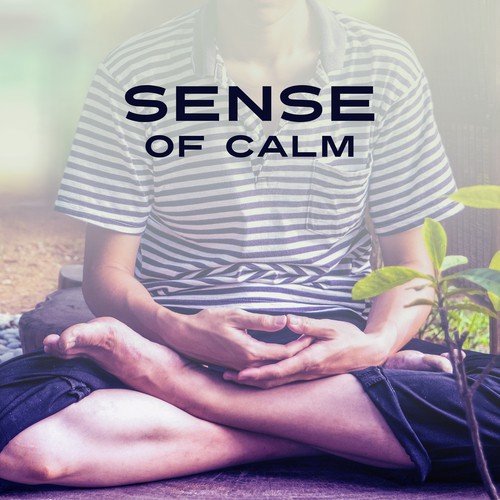
Open up for new experiences, especially in areas that do not leave you indifferent. A heart filled with anger, resentment and fear does not allow you to live the way you would like it to.
Fear of confrontation.
* Confrontation is a person's open and consistent opposition of his position and his demands to the initiator of the impact. Confrontation - open pressure and readiness to apply sanctions against those who violate the rules and agreements.
Those of us who fear confrontation often feel resentment. This is because they are unable to set boundaries and protect themselves in the process of communication.
The fear of confrontation is so great that we convince ourselves that the partner will not be able to adequately perceive the information and refuse to tell him the truth, although in fact his reaction could be completely different.
Our personal power increases as we learn to accept other people's opinions without judging or trying to justify our behavior. If we respond to an attack with an attack, the fear will increase. Instead of attacking, we can show generosity by saying the magic phrase: "You have the right to think differently, explain your position."
If we respond to an attack with an attack, the fear will increase. Instead of attacking, we can show generosity by saying the magic phrase: "You have the right to think differently, explain your position."
While you are waiting for all things and people to become perfect, life passes you by.
The best thing you can do is to recognize the feelings that are unpleasant for you, accept them, and in any case tell the truth. Instead of trying to explain your feelings, it is much more effective to accept them without undue emotion or judgment.
An understanding person says: "This is my feeling. This is my problem. What prevents me from realizing these unpleasant sensations? Why do I build my life and relationships with other people, trying to avoid anxiety and unrest?"
If we try to avoid any unpleasant feelings in life, personal relationships and at work, this means that we live in constant fear. We give up our strength and the opportunities that fate gives us.

